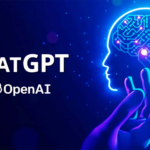Introduction: The Next Leap in Artificial Intelligence
Imagine trying to understand a movie by only reading its script or listening to its soundtrack without visuals. You’d miss out on crucial context, right? Similarly, early AI systems processed information from a single source—be it text, images, or audio—limiting their understanding. Enter Multimodal AI, a transformative approach that enables machines to process and interpret multiple data types simultaneously, much like humans do.

In this comprehensive guide, we’ll delve into the intricacies of Multimodal AI, exploring its core concepts, underlying technologies, real-world applications, benefits, challenges, and its profound impact on society and various industries.
Understanding Multimodal AI
Defining Multimodal AI
Multimodal AI refers to artificial intelligence systems capable of processing and integrating multiple forms of data—such as text, images, audio, and video—to generate a more comprehensive understanding of information. This integration allows for richer context, improved accuracy, and more human-like interactions.
Why It Matters
Traditional AI systems, known as unimodal AI, are limited to processing a single type of data. For instance, a text-based chatbot can’t interpret images, and a vision-based system can’t understand spoken language. Multimodal AI breaks these silos, enabling systems to:
- Enhance Contextual Understanding: By combining data from various sources, AI can grasp the full picture, leading to more accurate interpretations.
- Improve User Interactions: Multimodal systems can engage users through multiple channels, offering more natural and intuitive experiences.
- Expand Applicability: From healthcare to autonomous vehicles, the ability to process diverse data types opens up new avenues for AI applications.
Core Concepts of Multimodal AI
Modalities in AI
In the context of AI, a modality refers to a specific type of data input. Common modalities include:
- Text: Written language, such as articles, emails, or social media posts.
- Audio: Spoken language, music, or environmental sounds.
- Visual: Images, videos, or facial expressions.
- Sensor Data: Inputs from devices like accelerometers, GPS, or biometric sensors.
Fusion Techniques
Integrating multiple modalities requires sophisticated techniques:
- Early Fusion: Combines raw data from different modalities before processing.
- Late Fusion: Processes each modality separately and combines the results at the decision-making stage.
- Hybrid Fusion: A combination of early and late fusion, balancing the strengths of both approaches.
Challenges in Integration
- Data Alignment: Ensuring that data from different modalities correspond to the same context or event.
- Dimensionality Differences: Managing varying data structures and scales across modalities.
- Noise and Redundancy: Filtering irrelevant or repetitive information to maintain efficiency.
Technologies Powering Multimodal AI
Neural Networks and Deep Learning
At the heart of Multimodal AI are advanced neural networks capable of learning complex patterns:
- Convolutional Neural Networks (CNNs): Primarily used for processing visual data.
- Recurrent Neural Networks (RNNs) and Transformers: Effective for sequential data like text and audio.
- Multimodal Transformers: Designed to handle multiple data types simultaneously, facilitating cross-modal learning.
Natural Language Processing (NLP)
NLP enables machines to understand and generate human language. In multimodal systems, NLP works in tandem with other modalities to:
- Interpret textual inputs.
- Generate descriptive narratives for visual or audio data.
- Enhance conversational AI capabilities.
Computer Vision
Computer vision allows AI to interpret and analyze visual information. When integrated with other modalities:
- It can provide context to textual descriptions.
- Assist in identifying objects or scenes in images and videos.
- Enhance real-time decision-making in applications like autonomous driving.
Speech Recognition and Audio Processing
Processing audio data involves:
- Speech-to-Text: Converting spoken language into written text.
- Emotion Detection: Analyzing tone and pitch to infer emotional states.
- Sound Classification: Identifying specific sounds or patterns, such as alarms or footsteps.
Real-World Applications of Multimodal AI
Virtual Assistants
Modern virtual assistants, like Siri or Alexa, leverage multimodal AI to:
- Understand voice commands.
- Interpret user emotions through tone analysis.
- Provide visual feedback on screens or connected devices.
Healthcare Diagnostics
In healthcare, multimodal AI aids in:
- Analyzing medical images alongside patient records.
- Interpreting patient speech for mental health assessments.
- Monitoring vital signs through wearable devices.
Autonomous Vehicles
Self-driving cars utilize multiple modalities to navigate safely:
- Visual: Cameras detect road signs and obstacles.
- Audio: Microphones pick up sirens or horns.
- Sensor Data: LIDAR and radar provide depth and distance measurements.
Education and E-Learning
Educational platforms employ multimodal AI to:
- Adapt content based on student engagement and feedback.
- Provide interactive learning experiences combining text, visuals, and audio.
- Assess student performance through various input methods.
Benefits of Multimodal AI
Enhanced Contextual Understanding
By integrating diverse data types, AI systems can:
- Grasp nuanced meanings and intentions.
- Reduce ambiguity in interpretations.
- Make more informed decisions.
Improved User Engagement
Multimodal interactions lead to:
- More natural and intuitive user experiences.
- Increased accessibility for users with different preferences or needs.
- Higher satisfaction and trust in AI systems.
Broader Applicability
The versatility of multimodal AI allows for:
- Deployment across various industries and applications.
- Development of more robust and adaptable AI solutions.
- Continuous learning and improvement through diverse data inputs.
Challenges and Considerations
Data Privacy and Security
Handling multiple data types raises concerns about:
- Protecting sensitive information across modalities.
- Ensuring compliance with data protection regulations.
- Preventing unauthorized access or misuse of data.
Computational Complexity
Processing and integrating diverse data require:
- Significant computational resources.
- Advanced algorithms to manage and synchronize data streams.
- Efficient architectures to maintain real-time performance.
Bias and Fairness
Multimodal AI systems must address:
- Potential biases in training data across modalities.
- Ensuring fairness and inclusivity in AI decisions.
- Transparent and explainable AI behaviors.
The Future of Multimodal AI
Advancements in Human-AI Interaction
Future developments aim to:
- Create more empathetic and emotionally intelligent AI.
- Enhance collaboration between humans and machines.
- Develop AI systems that can adapt to individual user preferences.
Integration with Emerging Technologies
Multimodal AI will play a crucial role in:
- Augmented and Virtual Reality experiences.
- Smart home and IoT device interactions.
- Advanced robotics and automation systems.
Continued Research and Development
Ongoing efforts focus on:
- Improving data fusion techniques.
- Reducing computational requirements.
- Expanding the scalability and accessibility of multimodal AI solutions.
Conclusion
Multimodal AI represents a significant leap forward in artificial intelligence, enabling systems to process and understand information more holistically and human-like. By integrating various data types, it enhances contextual understanding, user engagement, and applicability across industries. As technology continues to evolve, embracing multimodal AI will be essential for developing more intelligent, adaptable, and inclusive AI systems.
Frequently Asked Questions (FAQs)
1. What distinguishes multimodal AI from traditional AI?
Multimodal AI processes and integrates multiple data types simultaneously (e.g., text, images, audio), whereas traditional AI typically handles a single data type, limiting its contextual understanding.
2. How does multimodal AI improve user experiences?
By combining various data inputs, multimodal AI offers more natural and intuitive interactions, catering to different user preferences and enhancing overall engagement.
3. What are the primary challenges in implementing multimodal AI?
Key challenges include data privacy concerns, computational complexity, and addressing biases across different data modalities.
4. In which industries is multimodal AI making the most impact?
Multimodal AI is significantly impacting healthcare, autonomous vehicles, education, virtual assistants, and customer service, among others.
5. What is the future outlook for multimodal AI?
The future of multimodal AI involves more advanced human-AI interactions, integration with emerging technologies like AR/VR, and ongoing research to improve efficiency and scalability.




